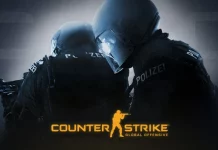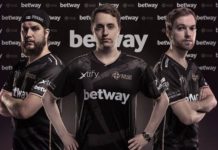Continuing her series on esports research ideas, Dr Darina Goldin of Bayes Esports discusses another idea for a product she’d like to see in the esports ecosystem. This time, she explains how the abundance of available data in many games could allow tactics to be analysed in detail in a way that isn’t possible in most traditional sports.
 A decade ago, I was playing Team Fortress 2 as part of a top 20 European team. TF2 is a fantastic first-person shooter that still remains a fan favourite.
A decade ago, I was playing Team Fortress 2 as part of a top 20 European team. TF2 is a fantastic first-person shooter that still remains a fan favourite.
Back then, competitive play was mostly 6v6 and matches were built around controlling certain areas of the map. Arriving in the centre of the map a second ahead of the opposing team and in better health could already decide the round in your favour.
As a team, we would practice these so-called “rollouts” for each map – everyone knew their exact place and path to the middle. We also developed clear plans of action for certain common situations, often depending on the team we were going to face.
After practice, I would write our tactics down in my playbook, that I still have and sometimes nostalgically leaf through.
Game-changing tactics
Solid tactics are arguably one of the most important factors of success in team sports – and that includes esports, too. At the highest level, a lot of elements like mechanics or aim are mostly equalised. It’s non-tangible things like decision-making and team cohesion that will decide a match.
Choosing which point to attack in Counter-Strike or when to pursue a neutral monster in League of Legends can turn the tide of the game and acting correctly when a player went down might save the team from a terrible situation. And of course there are the omnipresent opening tactics – champion selection probably being the one most readers are familiar with.
The need to quantify and evaluate tactics is not new. Professional teams are already engaging full-time analysts and companies like Shadow offer assistance to teams. But so far we are only seeing baby steps – and machine learning can go a long way to help develop a more profound understanding of the games.
On the frontier
In fact, esports are destined to be on the frontier of AI-supported analysis. The sheer availability of high-quality esports data makes it possible to get insights that go way beyond what traditional commentators and analysts can offer.
Take soccer for example. In order to glean any kind of automated insight, somebody needs to first transform the match data into a machine-readable form. Usually this will mean writing down ball possessions, passes, shots and player positions. The data is sparse and extending it is labour-intensive.
Adding new features, for instance, means rewatching all labelled matches again. Even if the players wear some kind of tracking device, creating a full dataset requires substantial work.
While this is feasible for commercially successful sports like soccer, it is entirely unrealistic for niche sports. This is where esports can truly shine – they already exist as data. If we have the right data provider, we know everything that is going on in a match – where the players were, when they shot and who they hit, even which buttons they pushed.
At Bayes Esports, we have access to official publisher data, and this means that a dataset can be as rich as we desire. If we find that something is missing, all we need to do to add information is to adjust some lines of code and let our parser run again.
Only the beginning
Some work in this direction has already been done. In 2021, Bayes Esports data scientist Gustav Geißler used machine learning to label various Counter-Strike strategies and compiled statistics on them.
Some very common trends emerged that made us want to pursue this research further. We believe that it is possible to compile a list of all CS:GO openings, just like chess plays, and then rate their success by controlling for different factors.
The analysis can then go deeper and correlate prevalence of plays with the in-game economy, or the reliance on certain team members. There is practically no limit to how far one could take this research.
Very similar studies are possible with MOBA titles, too. Here, we look less at the physical paths that the players took at the start of the map and more toward the objectives they fulfilled and the items they bought.
Having an abstraction for tactics then lets us study how they change from team to team or from patch to patch for the same team. This allows us to consider differences between the playing styles of teams, but also changes that occur within one team after a significant patch has come out.
And yet, all this is only the beginning – and there are far too few academic papers on these topics. Where are the grad students wanting to dive deep into esports data? I would really like to see research into esports tactics flourish in the coming years.
Machine learning experts have already begun teaming up with sports scientists, but the open research questions remain numerous. And many aspects of the games are not uniquely tied to esports – these rich datasets can be used to study team cohesion and cooperation, which can then be used to make hypotheses about other, offline sports.












